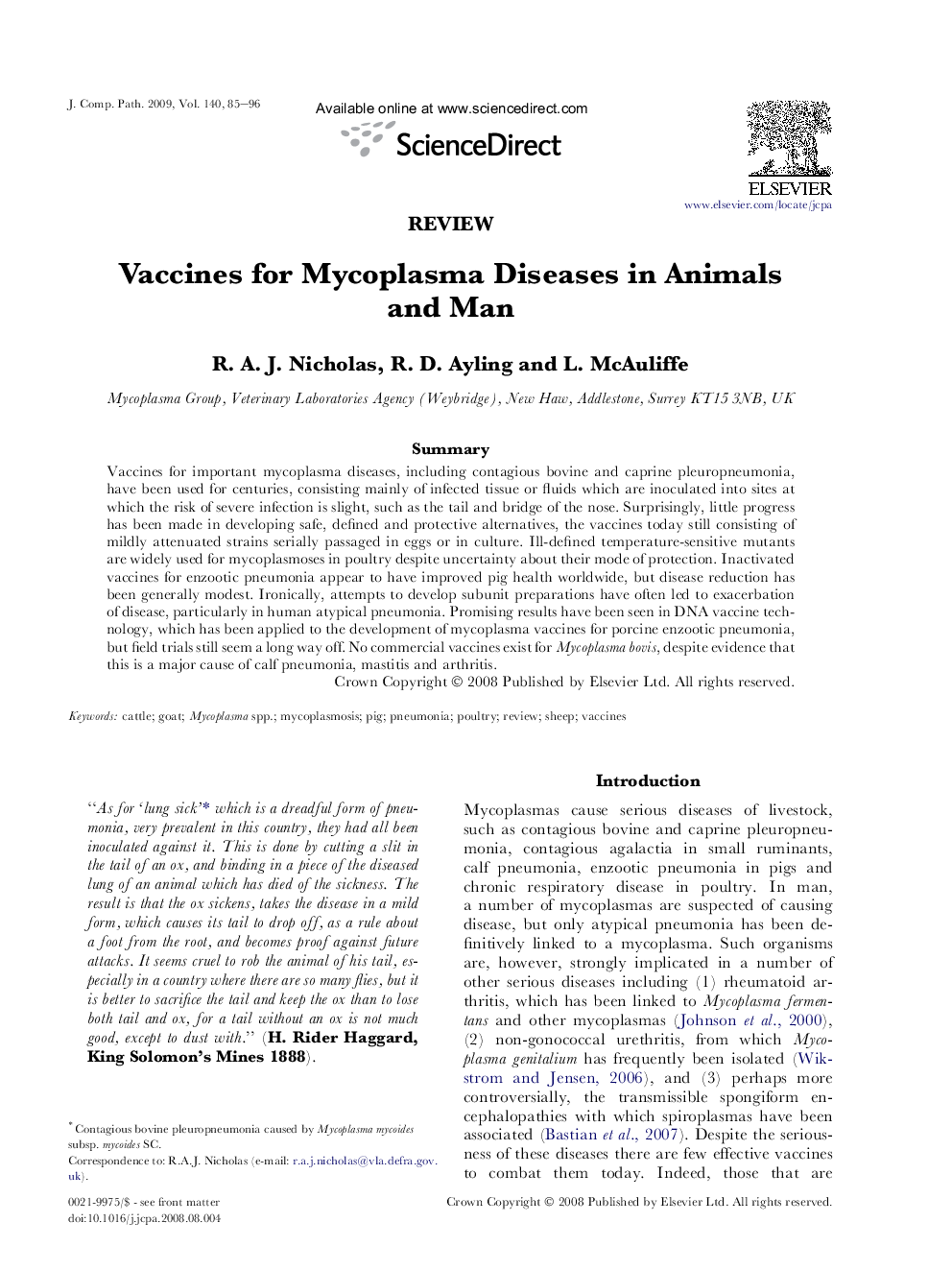| Article ID | Journal | Published Year | Pages | File Type |
|---|---|---|---|---|
| 2438442 | Journal of Comparative Pathology | 2009 | 12 Pages |
SummaryVaccines for important mycoplasma diseases, including contagious bovine and caprine pleuropneumonia, have been used for centuries, consisting mainly of infected tissue or fluids which are inoculated into sites at which the risk of severe infection is slight, such as the tail and bridge of the nose. Surprisingly, little progress has been made in developing safe, defined and protective alternatives, the vaccines today still consisting of mildly attenuated strains serially passaged in eggs or in culture. Ill-defined temperature-sensitive mutants are widely used for mycoplasmoses in poultry despite uncertainty about their mode of protection. Inactivated vaccines for enzootic pneumonia appear to have improved pig health worldwide, but disease reduction has been generally modest. Ironically, attempts to develop subunit preparations have often led to exacerbation of disease, particularly in human atypical pneumonia. Promising results have been seen in DNA vaccine technology, which has been applied to the development of mycoplasma vaccines for porcine enzootic pneumonia, but field trials still seem a long way off. No commercial vaccines exist for Mycoplasma bovis, despite evidence that this is a major cause of calf pneumonia, mastitis and arthritis.
